Steve in PA
Gold Member
- Jul 5, 2010
- 9,603
- 14,234
- 🥇 Banner finds
- 4
- Detector(s) used
- Fisher F75, XP Deus, Equinox 600, Fisher 1270
- Primary Interest:
- All Treasure Hunting
A friend of mine e-mailed me these pictures today. He is a jeweler and one of his clients brought it in to his shop. It came from an old ladies house. It looks like an 1800s love token except for a couple problems. This one has date of 1803. The ones I have seen before seem to always be mid to late 1800's based the coin types since the other side usually has the coin still showing. It also has a silversmiths mark on the back "ING". I have never seen a love token with a silversmiths mark. It is 32.5 mm in diameter - the same size as US half dollars minted between 1794 and 1836. That is also very large for a love token. Others I have seen always seem to be made from quarters or dimes. One other odd thing is the location of the hole. If it was suspended from a chain, everything would be upside down!
Any opinions on what this item is commemorating (marriage date?) and who the silversmith might be would be appreciated.
Any opinions on what this item is commemorating (marriage date?) and who the silversmith might be would be appreciated.


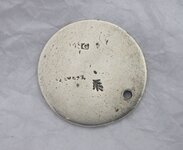
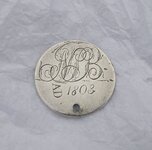
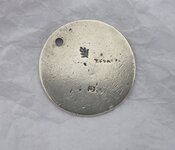


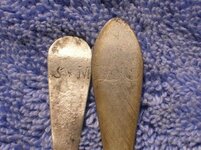
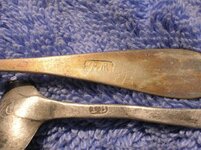
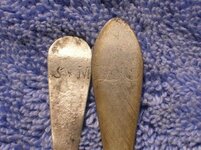
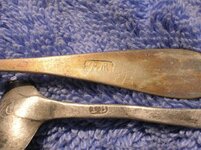


 "
" 
 , I don't know, but back to beer
, I don't know, but back to beer  , hey, maybe tid's do too. Is that why it was changed
, hey, maybe tid's do too. Is that why it was changed 

